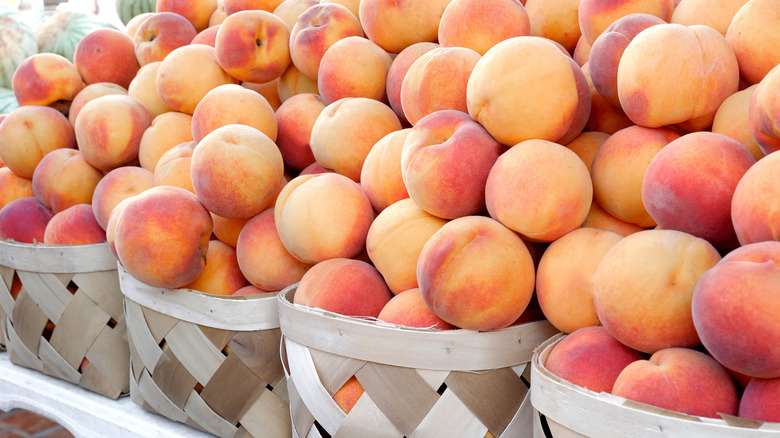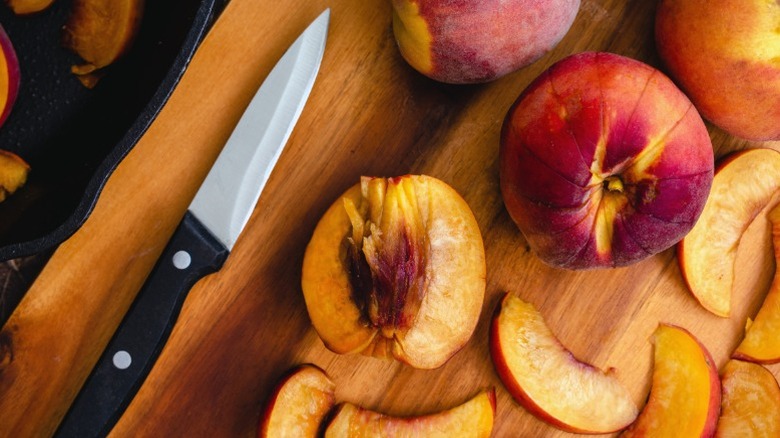How To Pit A Peach Without Completely Tearing The Fruit Apart
They're juicy and delicious eaten on their own, and decadent when baked into a pie or a tart. They're one of Georgia's most beloved exports, as Justin Bieber can attest. We're all truly grateful to have the humble peach in our lives. We just wish we didn't have to deal with the pits. You have to take the stones out in order to eat the peach properly, but it seems like it's impossible to do so without completely mutilating the poor fruit. It's an annoying, finicky process that's just...well, the pits. But how do you do it right? It depends on what kind of peach you have, but in general, the key is to cut it along the equator.
There are two main types of peach: clingstone and freestone. Clingstone peaches are, as the name implies, firmly enmeshed in the flesh of the peach, making them a pain in the butt to get out. Freestone peaches are generally bigger and much easier to deal with: Their pits aren't completely embedded in the peach, meaning it's easier to cut them open and pull them out. There are a few different methods you can use for these — you can cut them open top-to-bottom with a knife and pull the pit out by hand, push needle-nose pliers into the peach and pull the pit out that way, or you can cut along the equator. Freestones won't give you too much trouble.
Clingstone peaches are a little more difficult — but cutting along the equator helps
Clingstone peaches, as the name implies, are more finicky than freestones. Because the pits are so thoroughly integrated into the fruit's flesh, getting them out can feel like a game of Operation. Using the typical method of cutting open a peach (from top to bottom, lengthwise) could result in a juicy, pulpy mess. Because of this, clingstone peaches are often used for jam or jelly, as industrial methods make the process of pitting peaches much easier. But if you have some on hand, don't worry: just cut it differently, and you too can make the most of stone fruit season.
Pretend the peach is a globe, then, instead of cutting it along its axis (top to bottom), cut it along the equator (around the middle). Then, cut each half of the peach in two, along its respective equator. Ideally, the pit will come out nice and easy this way, and you'll be left with four peach quarters — perfect for snacking, combining with zucchini for a delicious summer side dish, or in a dessert, unless you prefer canned peaches in your cobbler.

